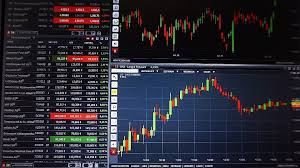
In the world of Forex trading, leverage is a critical concept that can significantly enhance a trader’s potential for profit while also increasing risk. As Forex markets continue to attract both beginners and seasoned traders alike, understanding how leverage works is essential for successful trading. In this article, we will delve deep into the intricacies of leverage in Forex, including its benefits, risks, and effective strategies for managing it. For tools and resources on trading, check out leverage in forex trading trader-apk.com.
What is Leverage in Forex Trading?
Leverage is a financial tool that allows traders to control a larger position in the market with a smaller amount of capital. In Forex trading, this is typically expressed as a ratio. For example, a leverage of 100:1 means that a trader can control $100 in the market for every $1 of their own capital. This capability can amplify potential earnings, making it an attractive feature for traders looking to maximize their investments.
How Leverage Works
When a trader opens a Forex position using leverage, they are essentially borrowing money from their broker to increase the size of their trades. This means that even small price movements in the market can result in significant profits or losses. While leverage can lead to higher returns, it also magnifies the risks involved. If the market moves against a trader’s position, they can incur losses that exceed their initial investment.
Benefits of Using Leverage
One of the main advantages of using leverage in Forex trading is the possibility of higher returns. Here are some key benefits:
- Increased Buying Power: Traders can access larger positions which can lead to more significant profits if trades are successful.
- Flexibility: With leverage, traders can diversify their portfolios by trading various currency pairs without needing large amounts of capital for each position.
- Access to More Opportunities: Leverage allows traders to participate in Forex markets even with limited funds, providing more opportunities to capitalize on market movements.
Risks of Using Leverage
While leverage can boost profits, it also carries substantial risks. Traders should be aware of the following potential pitfalls:
- Amplified Losses: Just as leverage can increase profits, it can also lead to more significant losses. Traders should be prepared for the possibility of losing more than their initial investment.
- Margin Calls: If a trader’s account equity falls below the required margin level due to losses, the broker may issue a margin call, requiring the trader to deposit additional capital or face liquidation of their positions.
- Emotional Stress: Trading with leverage can lead to heightened stress and emotional decision-making, which may result in poor trading choices.
Key Considerations When Using Leverage
To navigate the complexities of leverage effectively, traders should consider the following strategies:

1. Understanding Margin Requirements
Before leveraging a trade, it’s crucial to understand the margin requirements set by the broker. This information is essential to determine how much capital is needed to open and maintain a leveraged position.
2. Setting Proper Risk Management Strategies
Effective risk management is vital when trading with leverage. This includes setting stop-loss orders, knowing the amount of risk per trade, and maintaining a balanced risk-to-reward ratio.
3. Using Leverage Responsibly
Traders should avoid over-leveraging their accounts. A conservative approach is often more sustainable in the long run, allowing traders to weather market volatility without facing significant drawdowns.
4. Education and Continuous Learning
Continuous education about market dynamics, leverage, and trading strategies can help traders make informed decisions. Engaging with educational resources, webinars, and trading forums can enhance a trader’s understanding and capabilities.
Choosing the Right Leverage Ratio
The appropriate leverage ratio varies depending on the trader’s experience level, risk tolerance, and trading strategy. New traders may benefit from lower leverage to minimize risk while they gain experience. As traders become more confident and develop better strategies, they may choose to increase their leverage. Always weigh the potential rewards against the risks before deciding on a leverage ratio.
The Role of Brokers in Leverage
Forex brokers play a significant role in determining the leverage options available to traders. Regulations differ across regions, influencing the maximum leverage brokers can offer. Therefore, it’s important for traders to research and choose a reputable broker that provides the right leverage according to their trading needs. Additionally, brokers may have different margin requirements for various currency pairs, which can impact how leverage is applied to specific trades.
Conclusion
In summary, leverage is a powerful tool in Forex trading that can enhance a trader’s potential profits but also increase risks. Understanding how leverage operates, its benefits, and its associated risks is crucial for traders looking to navigate the Forex markets effectively. By implementing sound risk management strategies, maintaining a responsible approach to leveraging, and continually educating themselves, traders can maximize their chances of success in the exciting yet volatile world of Forex trading.
With proper knowledge and strategy, leverage can be a useful ally in a trader’s journey. As always, informed and disciplined trading is the key to long-term success. Happy trading!
